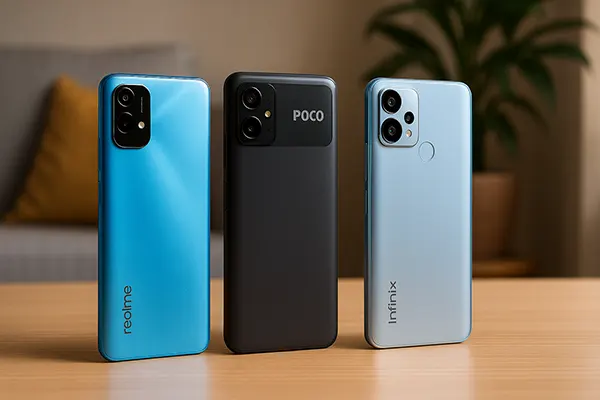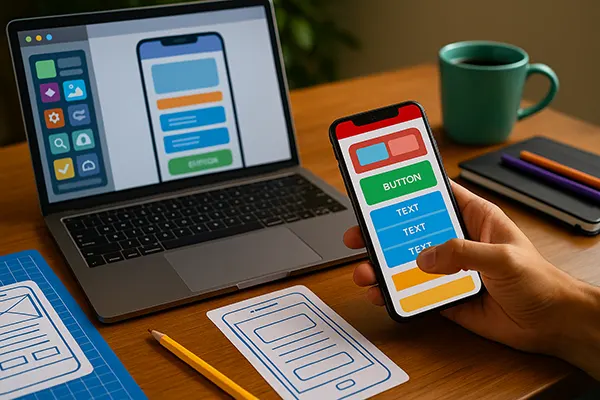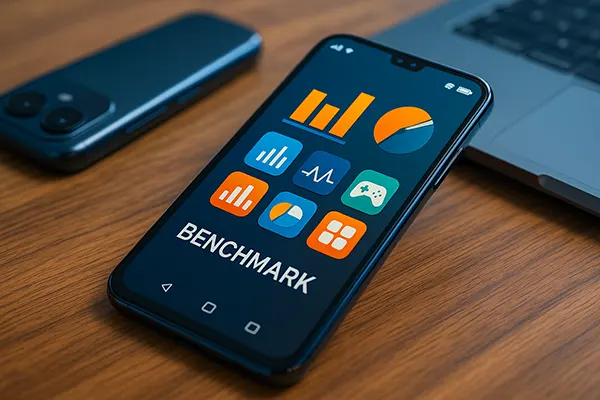Over the past few years, affordable smartphones have ceased to be mere entry-level devices and have transformed into fully fledged ecosystems. Manufacturers like Realme, Poco, and Infinix are not only offering quality budget phones but are also building comprehensive technology experiences around them. This shift is fundamentally changing consumer expectations and reshaping the mid-to-low price segment across Asia, Africa and parts of Europe.
The Rise of the Affordable Ecosystem
Affordable smartphones have evolved beyond offering just good value. Brands like Realme, Poco and Infinix have started embedding their devices within a wider ecosystem of accessories, apps, and smart services. The focus is no longer solely on specifications, but on how the entire product line connects and interacts.
Realme, for example, has established a reputation for pairing its budget phones with AIoT products, including smartwatches, earbuds and even smart TVs. Poco, while known for its performance-focused handsets, is also investing in features that promote long-term usage — such as clean Android skins and battery efficiency. Infinix, meanwhile, is turning heads in emerging markets by offering integrated experiences, including laptop integration and proprietary apps optimised for local needs.
These companies no longer just compete on pricing. They are educating users to expect more, even in the budget segment — building habits and brand loyalty that stretch beyond the smartphone itself.
Market Penetration and Regional Focus
The success of these brands has been closely linked to regional strategies. Realme, for instance, has heavily targeted India and Southeast Asia, aligning releases with local festivals and consumer cycles. It uses flash sales and aggressive pricing to dominate online channels, while also expanding its offline presence.
Poco, a sub-brand of Xiaomi, leverages the company’s supply chain and ecosystem to offer power-user features at affordable rates. Its focus on gaming and content consumption attracts younger demographics, particularly in regions like Latin America and Central Europe.
Infinix has taken a different route, building its presence in Africa and South Asia. By localising content and offering tailored customer support, it has fostered strong user communities. Their recent inclusion of Extended RAM, high refresh rate displays and high-speed charging in sub-$150 phones has made them stand out.
Hardware Evolution and Feature Trickling
One of the biggest shifts in the budget smartphone space is the trickle-down effect of premium features. What was once considered flagship-exclusive — such as AMOLED displays, 5G connectivity and advanced camera setups — is now becoming accessible in devices under $250.
Realme was among the first to bring high refresh rate displays to affordable phones. Its Narzo and C-series models regularly integrate features once reserved for devices two or three times more expensive. Similarly, Poco’s M and X series offer Snapdragon 600 or even 700-series chipsets — excellent for gaming and multitasking.
Infinix, traditionally seen as a more entry-level option, has raised the bar with its Zero series. Their inclusion of 108MP cameras and fast charging standards rival those of well-established global brands. These advancements push competitors to respond, creating a cycle of innovation that benefits the end user.
Battery, Performance and Longevity
Battery performance remains a central pillar for all three brands. Long-lasting cells, often 5000mAh or more, are now standard even in the most affordable models. Add to that optimisation through light operating systems like Realme UI or Poco’s MIUI Lite, and you get smooth experiences even with limited hardware.
Performance is no longer compromised. In fact, in benchmarks, some models by Poco and Realme beat mid-range offerings from legacy brands like Samsung and Motorola. Storage speeds, thermal management and memory handling have all improved dramatically.
These improvements extend longevity. Users no longer feel forced to upgrade within a year or two, making budget smartphones not just affordable but sustainable. This in turn makes them more appealing in markets where smartphone replacement cycles are longer.

Software Integration and After-Sales Support
Another cornerstone of the evolving ecosystem is software and service. Realme offers regular updates to its Realme UI, increasingly aligned with user feedback. Poco’s near-stock Android experience ensures stability and user familiarity. Infinix has even begun to experiment with its own XOS operating system, adding features like smart panel controls, lightning multi-window and security toolkits.
Moreover, the shift towards better software support is no longer exclusive to premium brands. Budget devices now receive 2–3 years of security updates and at least one major Android version upgrade. This marks a significant leap in customer trust and long-term usability.
Customer service has also matured. Dedicated apps for support, remote troubleshooting and extended warranty programmes are becoming more common, even for phones priced under $200. Such efforts foster brand loyalty and reduce friction during post-sale interactions.
What the Future Holds
The direction is clear: Realme, Poco and Infinix are redefining what “budget” means. Their smartphones are no longer temporary stopgaps or compromises but daily drivers capable of satisfying the majority of users’ needs. More than that, they are serving as gateways into broader tech ecosystems.
Expect the next frontier to include more AI-powered features, deeper integration with smart home devices, and possibly even vertical expansion into education, fintech, and health — all driven by these affordable ecosystems.
With the gap between premium and budget shrinking rapidly, 2025 may very well be the year these brands fully challenge traditional industry hierarchies — not by imitating flagship rivals, but by building something uniquely their own.




